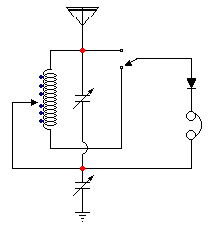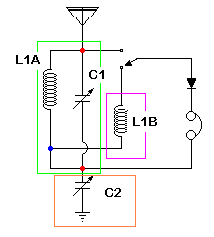Maximzodal
Newbie level 3

- Joined
- Jul 10, 2013
- Messages
- 3
- Helped
- 1
- Reputation
- 2
- Reaction score
- 1
- Trophy points
- 3
- Activity points
- 38
First of all, I know enough electronics to be dangerous but I'm very willing to learn. I appreciate your patience. I recently decided to build a "better" crystal radio than the oatmeal box set I made as a kid. There are a lot plans! But many use 2 or 3 or 4 gang variable capacitors with various pF units. I understand how a variable capacitor works in an L/C circuit to 'tune' the resonant frequency, but why 2 or more gangs? What do they bring to the project? Are they connected to the same L/C circuit? I did a search here and on google but if the information is available I haven't been able to find it. Can anyone point me in the direction where I can be educated?
Thanks,
Max
Thanks,
Max




